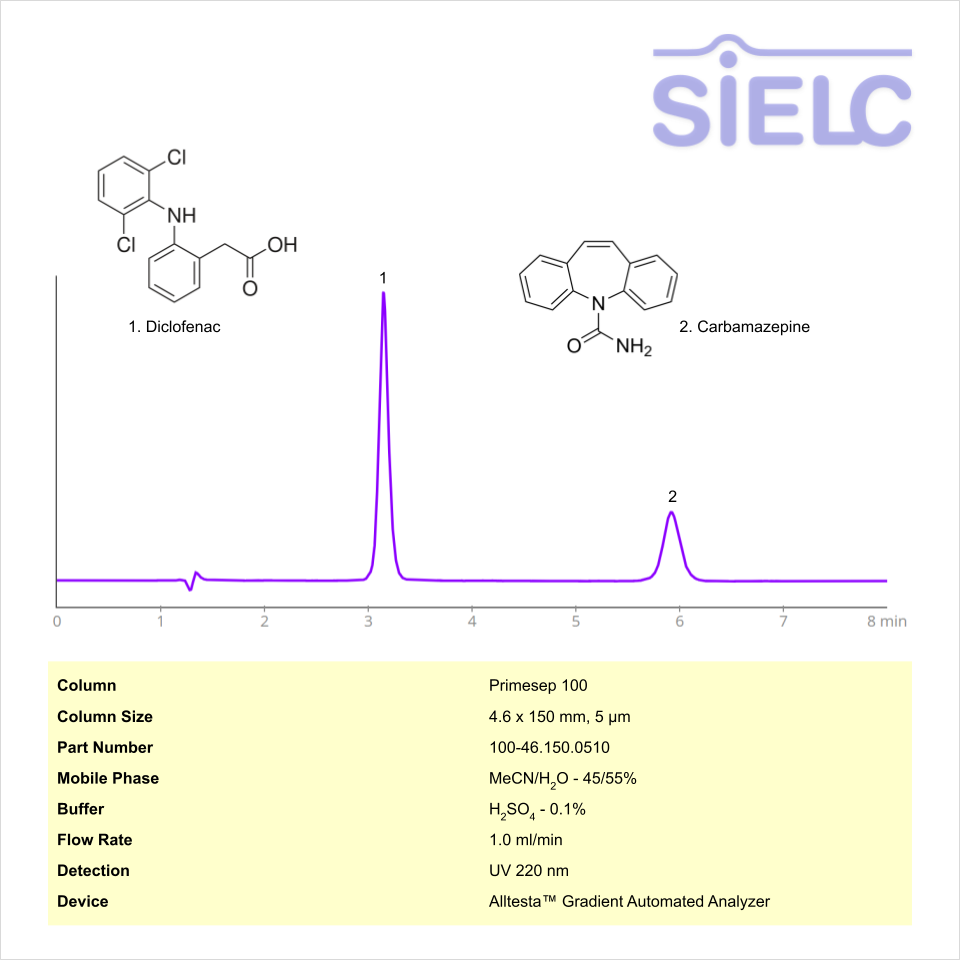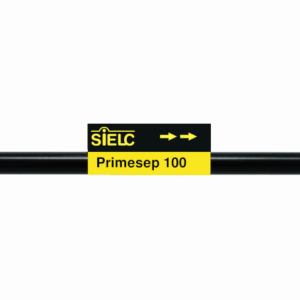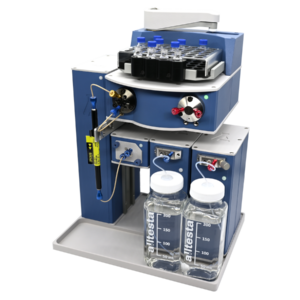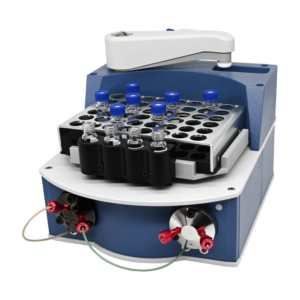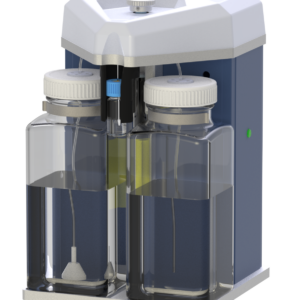HPLC Method for Diclofenac, Carbamazepine on Primesep 100 by SIELC Technologies
High Performance Liquid Chromatography (HPLC) Method for Analysis of Diclofenac, Carbamazepine
Diclofenac is an organic compound with the molecular formula C14H11Cl2NO2.
Properties:
Appearance: Typically an odorless, white to off-white crystalline, slightly hygroscopic powder.
Molecular weight: ~296.1 g/mol
Solubility: Soluble in organic solvents like ethanol.
Uses: A nonsteroidal anti-inflammatory drug (NSAID) used to relieve pain and reduce inflammation and swelling.
Carbamazepine is an organic compound with the molecular formula C15H12N2O.
Properties:
Appearance: Typically a white to off-white crystalline powder.
Molecular weight: ~236.27 g/mol
Solubility: Soluble in organic solvents like ethanol.
Uses: Mainly used to treat several conditions affecting the nervous system such as epilepsy.
Diclofenac, Carbamazepine can be retained and analyzed using the Primesep 100 stationary phase column. The analysis utilizes an isocratic method with a simple mobile phase consisting of water, acetonitrile (MeCN), and sulfuric acid. Detection is performed using UV at 220 nm.
| Column | Primesep 100, 4.6 x 150 mm, 5 µm, 100 A, dual ended |
| Mobile Phase | MeCN – 45% |
| Buffer | H2SO4 – 0.1% |
| Flow Rate | 1.0 ml/min |
| Detection | UV 220 nm |
*LOD was determined for this combination of instrument, method, and analyte, and it can vary from one laboratory to another even when the same general type of analysis is being performed.
| Class of Compounds | Drug |
| Analyzing Compounds | Diclofenac, Carbamazepine |
Application Column
Primesep 100
Column Diameter: 4.6 mm
Column Length: 150 mm
Particle Size: 5 µm
Pore Size: 100 A
Column options: dual ended
Diclofenac

